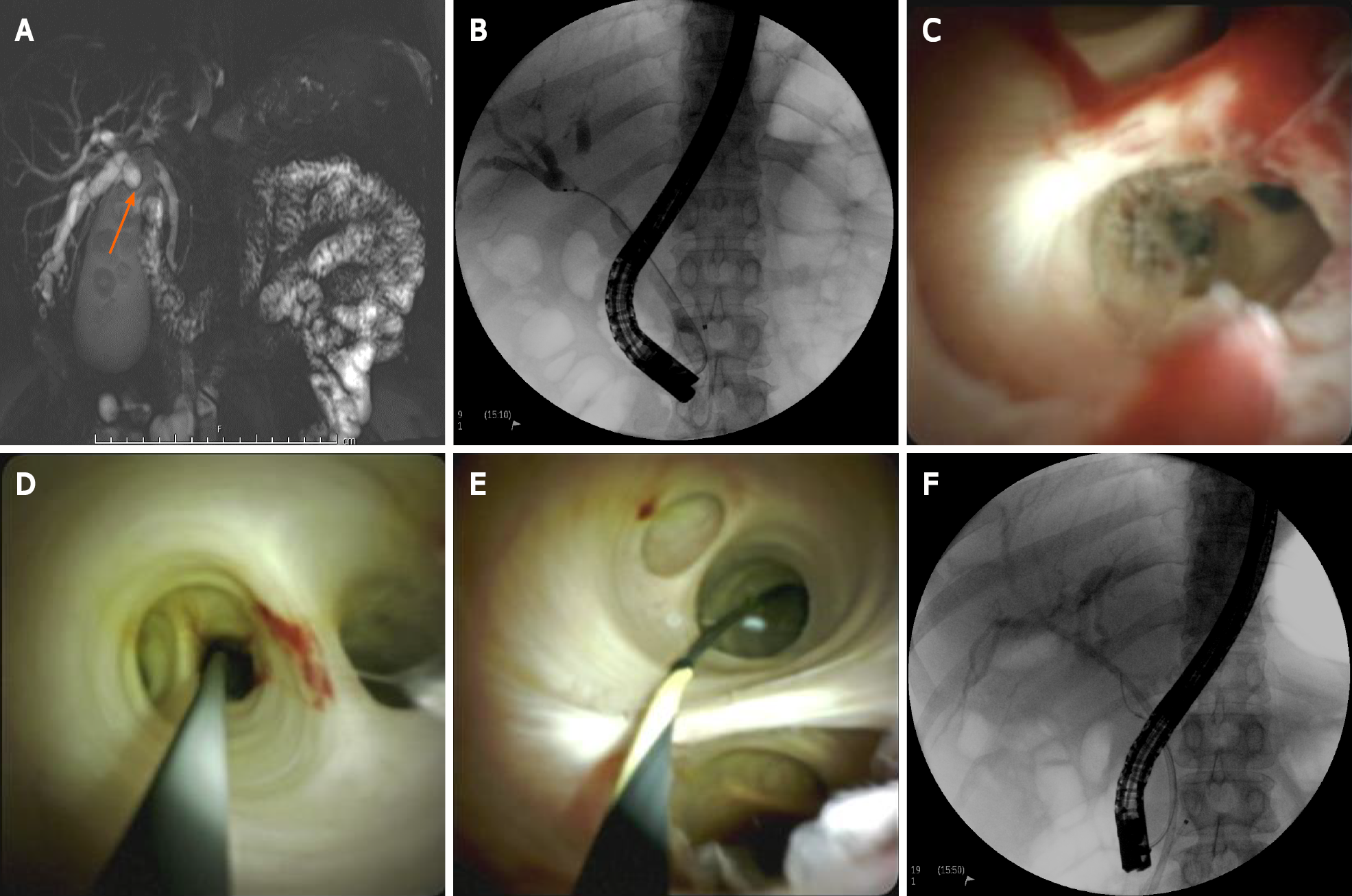Copyright
©The Author(s) 2022.
World J Gastrointest Endosc. Feb 16, 2022; 14(2): 63-76
Published online Feb 16, 2022. doi: 10.4253/wjge.v14.i2.63
Published online Feb 16, 2022. doi: 10.4253/wjge.v14.i2.63
Figure 3 Example of an indeterminate biliary stricture further evaluated by cholangioscopy, initially thought to be Mirizzi syndrome secondary to chronic choledocholithiasis.
A: Magnetic resonance cholangiopancreatography (T2 HASTE, coronal projection) demonstrating cholelithiasis, choledocholithiasis, and right hepatic ductal dilation as well as possible common hepatic duct (CHD) obstruction (arrow); B: Endoscopic retrograde cholangiopancreatography (ERCP) showing 1.5 cm CHD stricture suspicious for perihilar cholangiocarcinoma (CCA); C: Frond-like growth and neovascularization suggestive of neoplasm involving the CHD, later confirmed as perihilar CCA following SpyBiteTM Max biopsy (previously with negative cytology on initial ERCP); D and E: Multiple views of the hepatic ducts that demonstrate scant reactive changes (from prior plastic biliary stent) and proximal limit of disease extension/tumor mapping; F: ERCP confirming successful deployment of plastic biliary stent across CHD stricture and subsequent decompression of right hepatic duct.
- Citation: Subhash A, Buxbaum JL, Tabibian JH. Peroral cholangioscopy: Update on the state-of-the-art. World J Gastrointest Endosc 2022; 14(2): 63-76
- URL: https://www.wjgnet.com/1948-5190/full/v14/i2/63.htm
- DOI: https://dx.doi.org/10.4253/wjge.v14.i2.63









